Click here and press the right key for the next slide (or swipe left)
also ...
Press the left key to go backwards (or swipe right)
Press n to toggle whether notes are shown (or add '?notes' to the url before the #)
Press m or double tap to slide thumbnails (menu)
Press ? at any time to show the keyboard shortcuts
Categorical Perception in Infancy
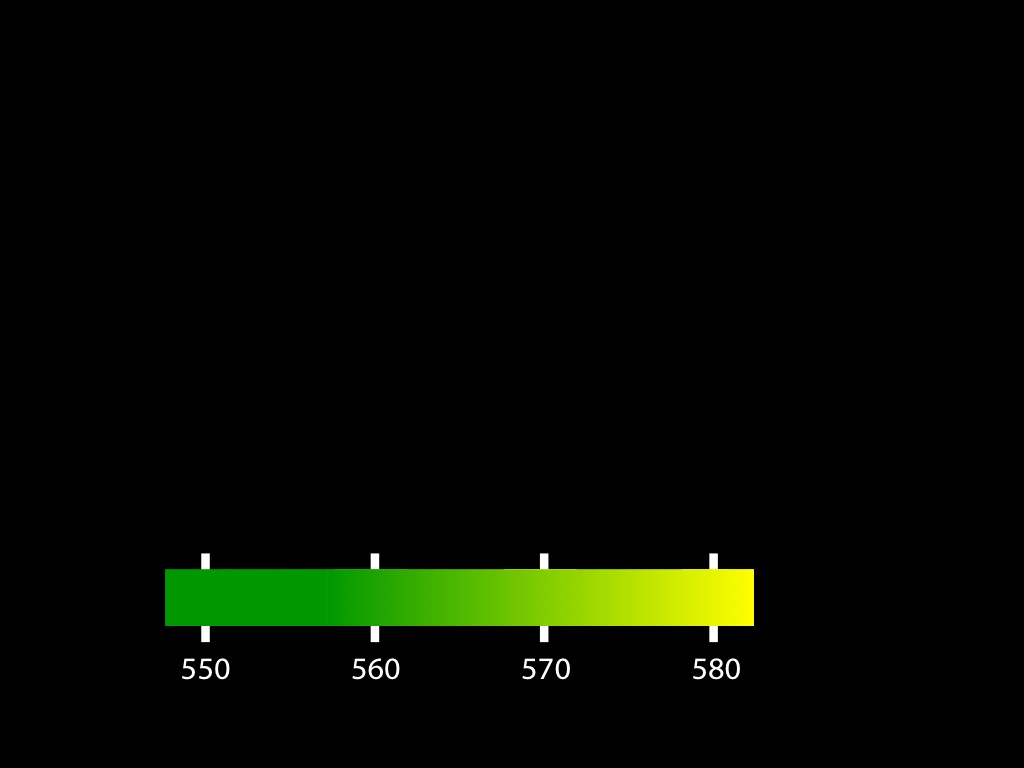
Categorical perception of colour emerges early in infancy. This has been demonstrated with four-month-olds using habituation \citep{Bornstein:1976of} and
visual search \citep{Franklin:2005xk}.
Slightly older infants can make use of colour properties such as red and green to recognise objects.
For instance, nine-months-olds can determine whether an object they saw earlier is the same as a subsequently presented object on the basis of its colour
\citep{Wilcox:2008jk}.
By the time they are two years old, toddlers who do not comprehend any colour words can use colour categories implicitly in learning and using proper names;
for instance, they are able to learn and use proper names for toy dinosaurs that differ only in colour \citep[][Experiment 3]{Soja:1994np}.
So infants and toddlers enjoy categorical perception of colour and may benefit from it in recognising and learning about objects.
However children only acquire concepts of, and words for, colours some time later; and colour concepts, like colour words, are acquired gradually
\citep{Pitchford:2005hm,Kowalski:2006hk,Sandhofer:1999if,Sandhofer:2006qo}.
Categorical perception of colour emerges early in infancy, from around four months or earlier, as has been demonstrated using habituation (Bornstein, Kessen
and Weiskopf 1976).
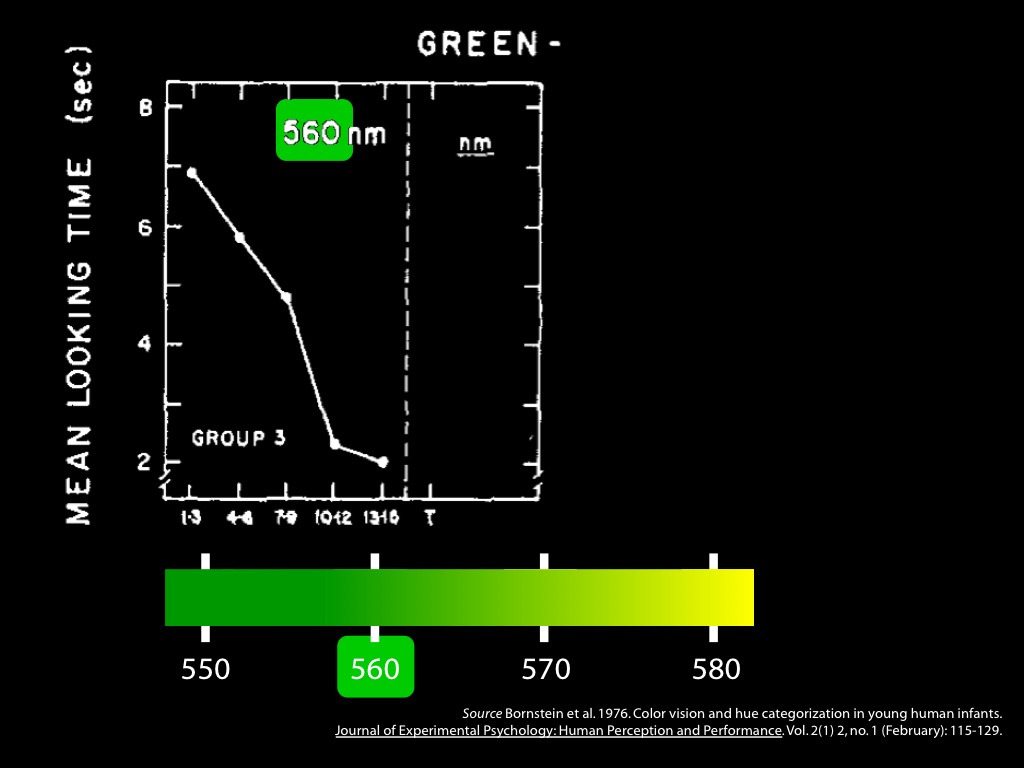
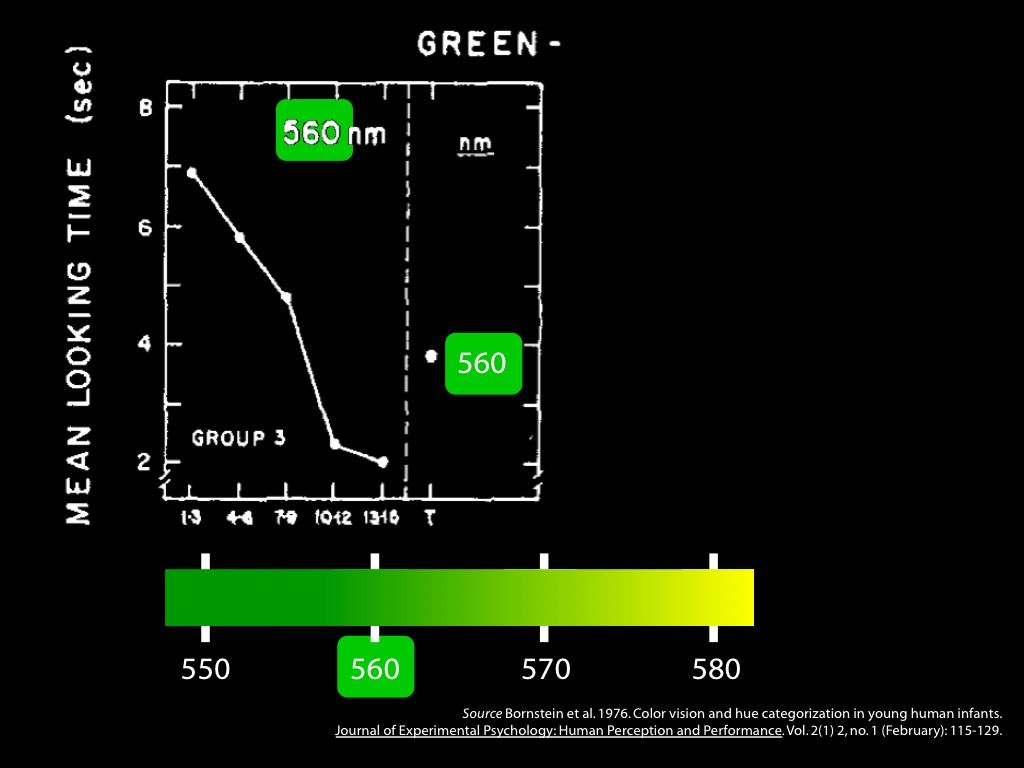
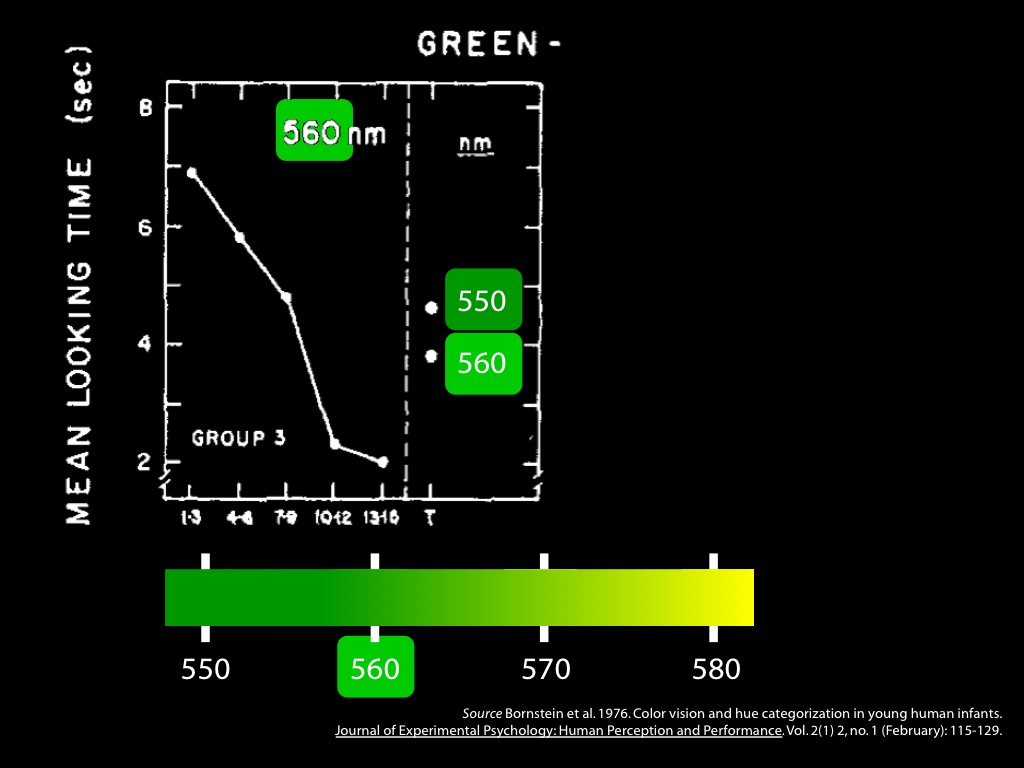
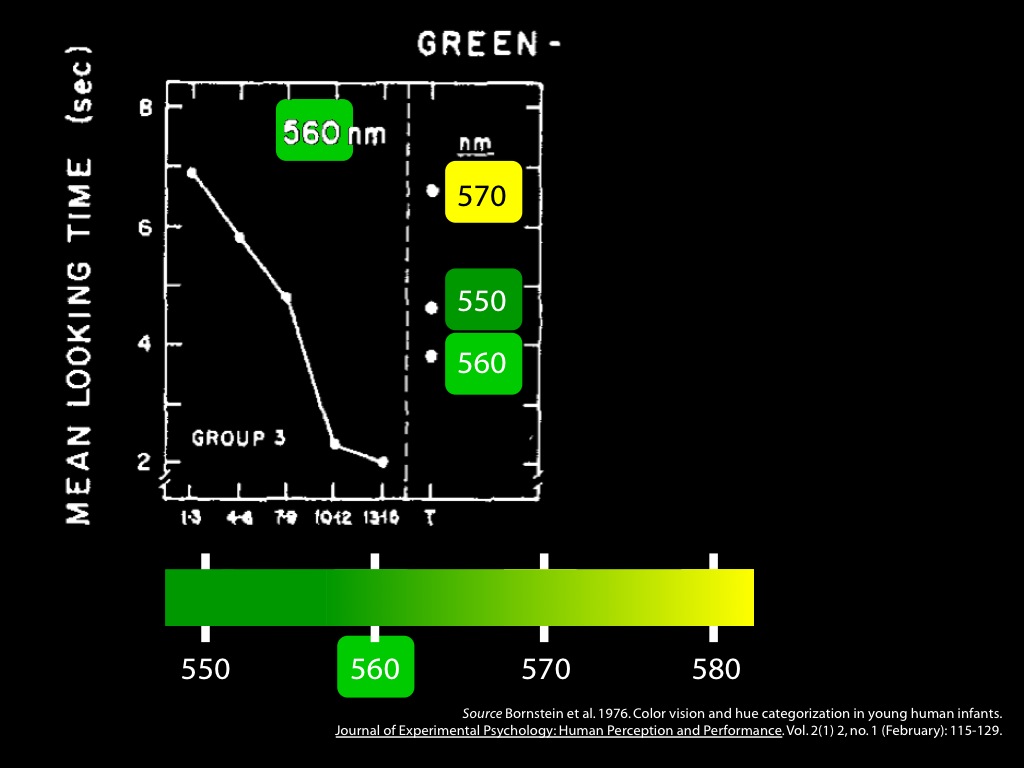

Categorical perception has also been demonstrated at four months of age using pop-out (Franklin, Pilling and Davies 2005).
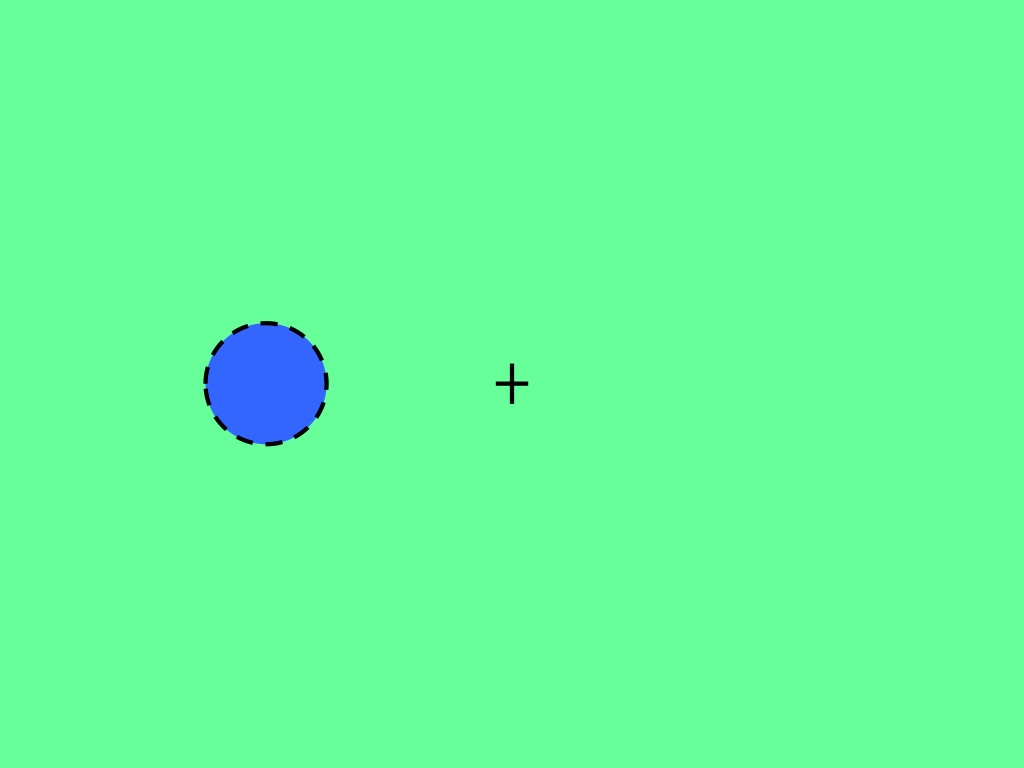

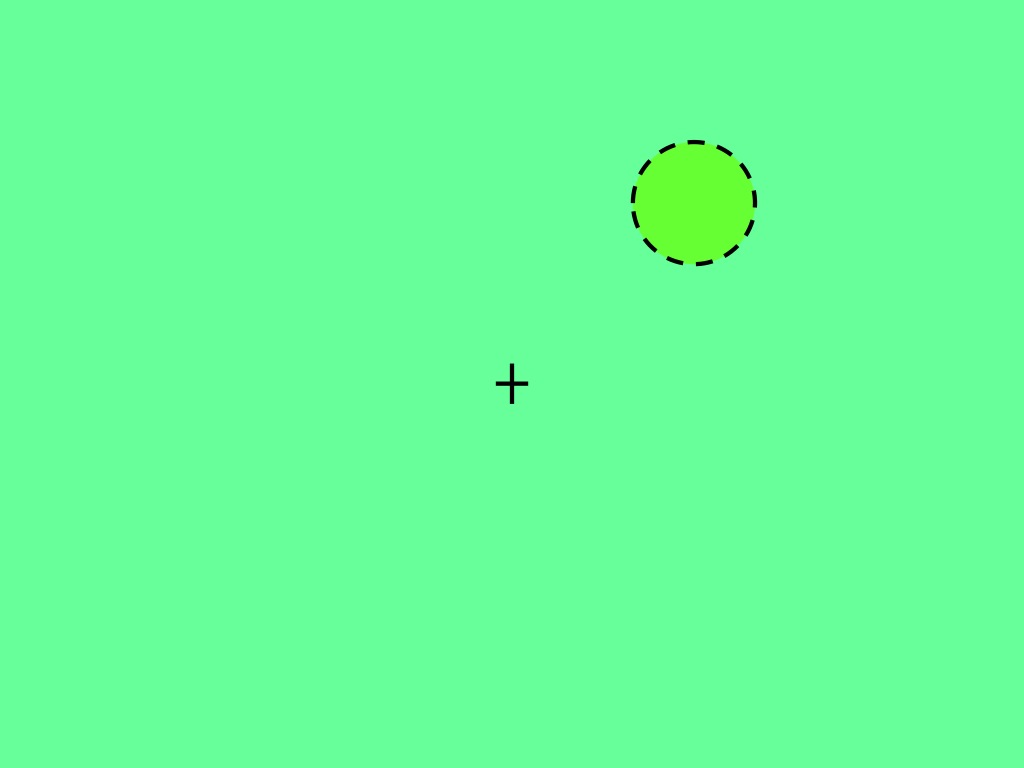
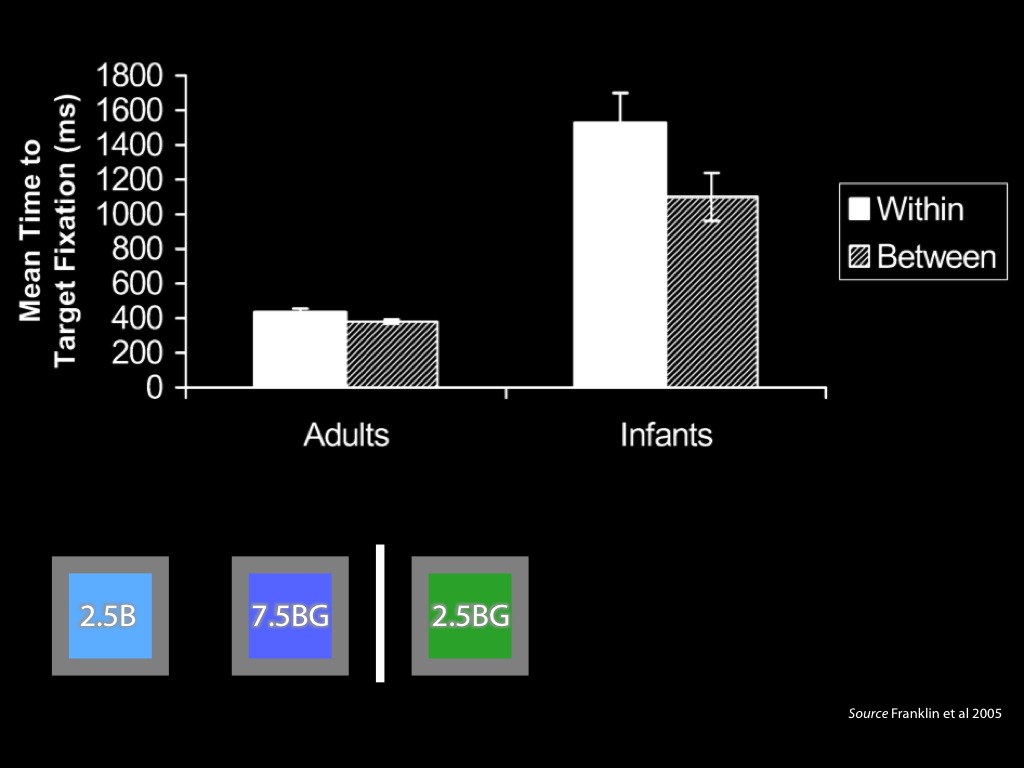
Before children reliably use colour words correctly, categorical perception explains:
- habituation -- 4 months
(Bornstein, Kessen and Weiskopf 1976)
- pop out -- 4 months
(Franklin, Pilling and Davies 2005)
- re-identifying objects -- 9 months
(Wilcox, Woods and Chapa 2008)
Slightly older infants can also make use of colour properties such as red and green to recognise objects. For instance, nine-months-olds can determine whether an object they saw earlier is the same as a subsequently presented object on the basis of its colour (Wilcox, Woods and Chapa 2008). - learning proper names -- around 2 years
By the time they are two years old, toddlers who do not comprehend any colour terms can use colour categories implicitly in learning and using proper names; for instance, they are able to learn and use proper names for toy dinosaurs that differ only in colour (Soja 1994: Experiment 3).
(Soja 1994: Experiment 3)
So we see categorical perception of colour early in development and it is useful to children.
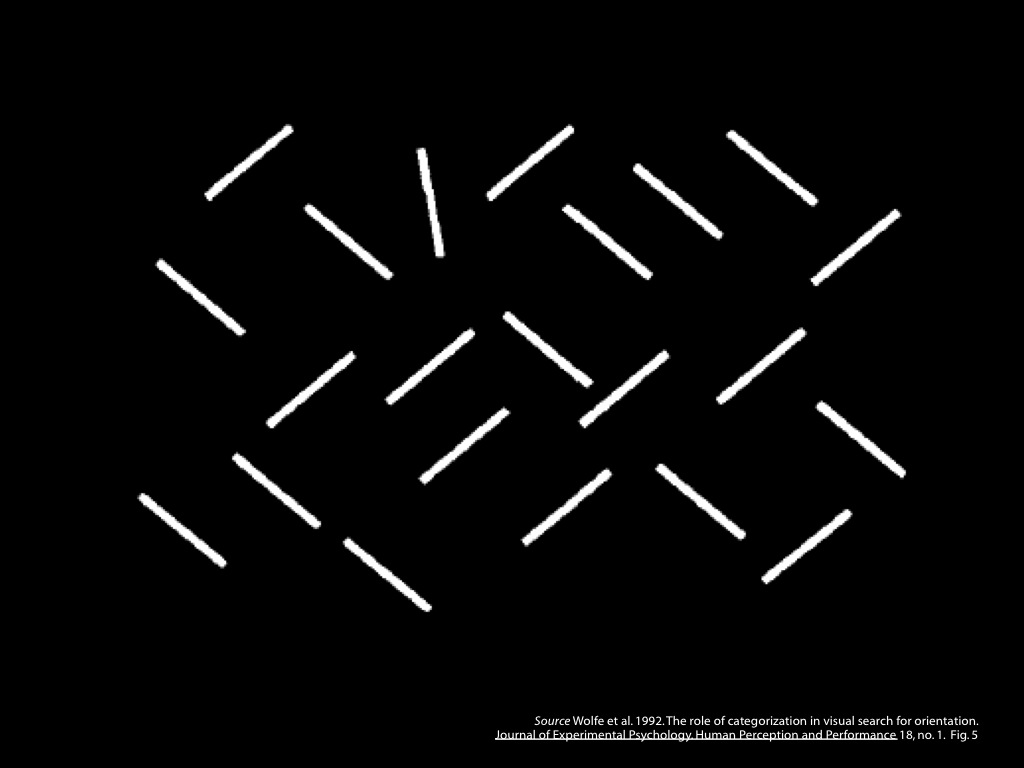
\subsection{Other cases}
Infants enjoy categorical perception not only of colour but also of orientation \citep{franklin:2010_hemispheric}, speech
\citep{Kuhl:1987la,Kuhl:2004nv,Jusczyk:1995it} and facial expressions of emotion \citep{Etcoff:1992zd,Kotsoni:2001ph,Campanella:2002aa}.
Infants enjoy categorical perception not only of colour but also of orientation (Franklin et al. 2010), speech (Kuhl 1987, 2004; Jusczyk 1995) and facial
expressions of emotion (Etcoff & Magee 1992; Kotsoni et al. 2001; Campanella et al. 2002).
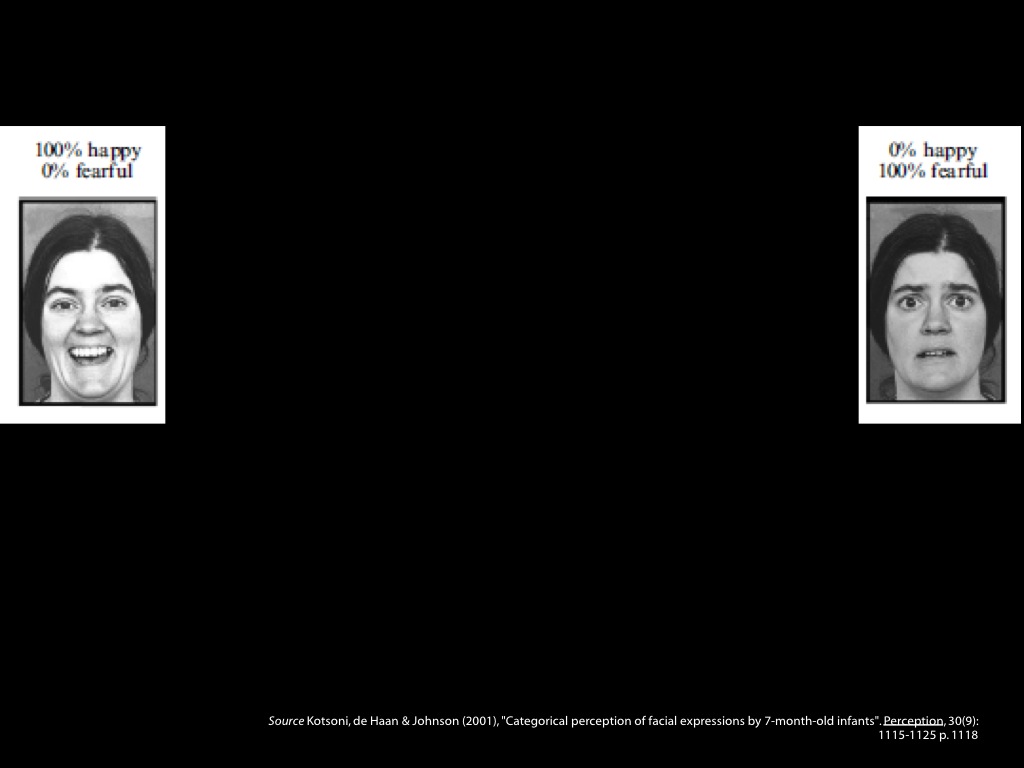
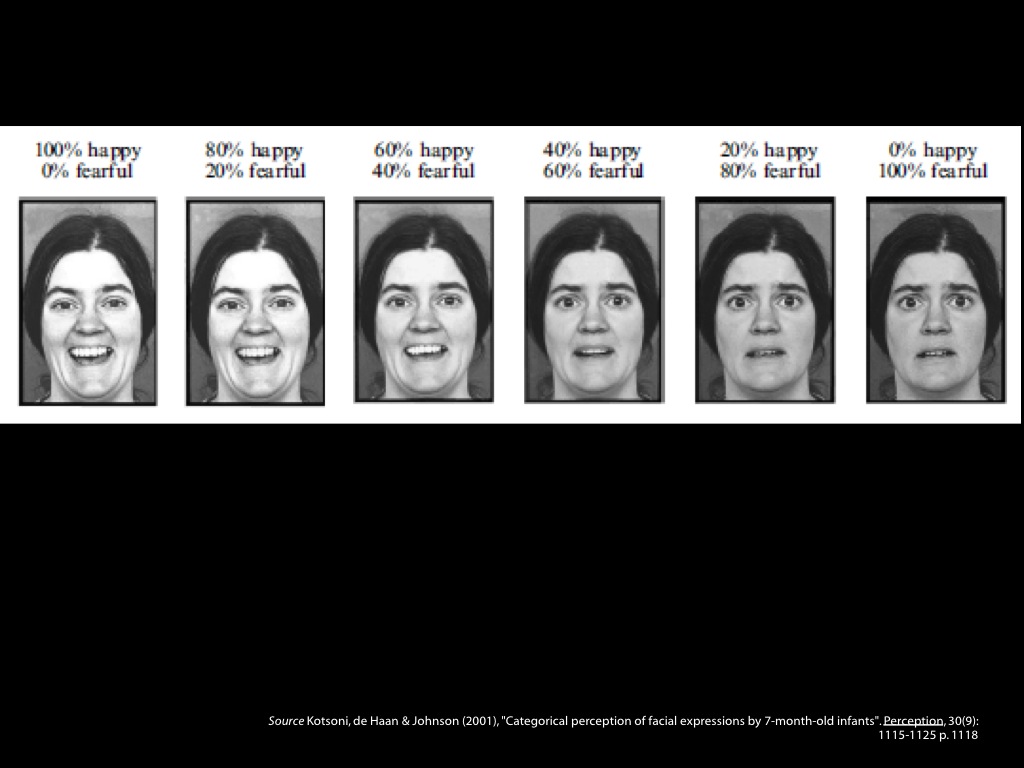
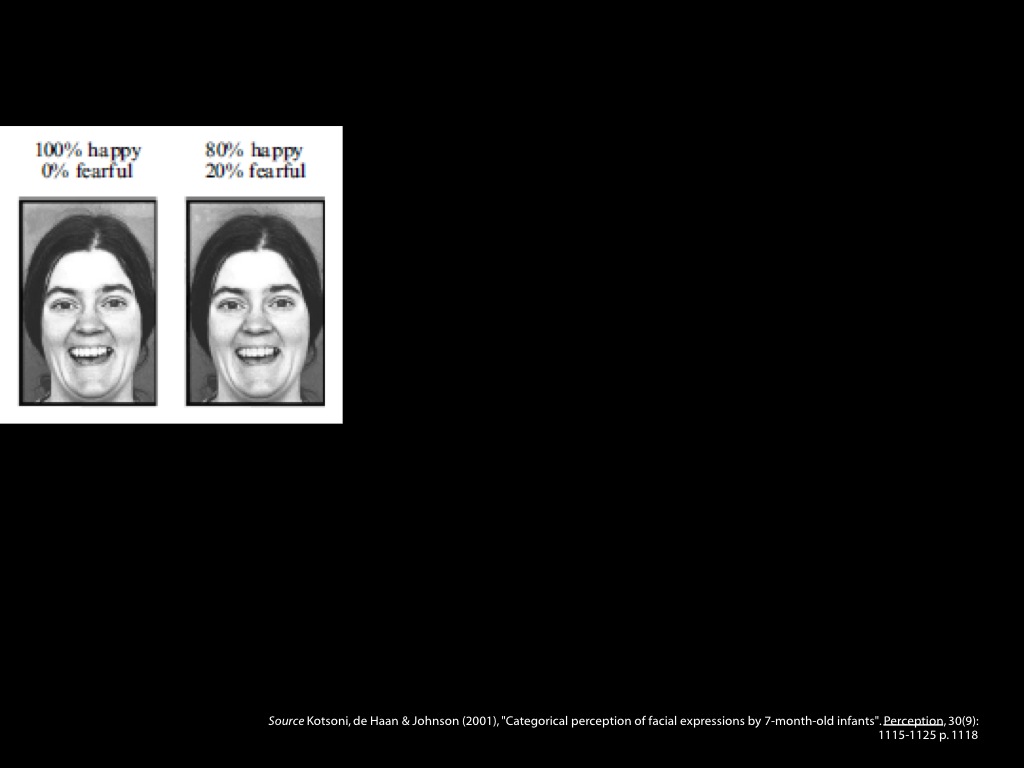
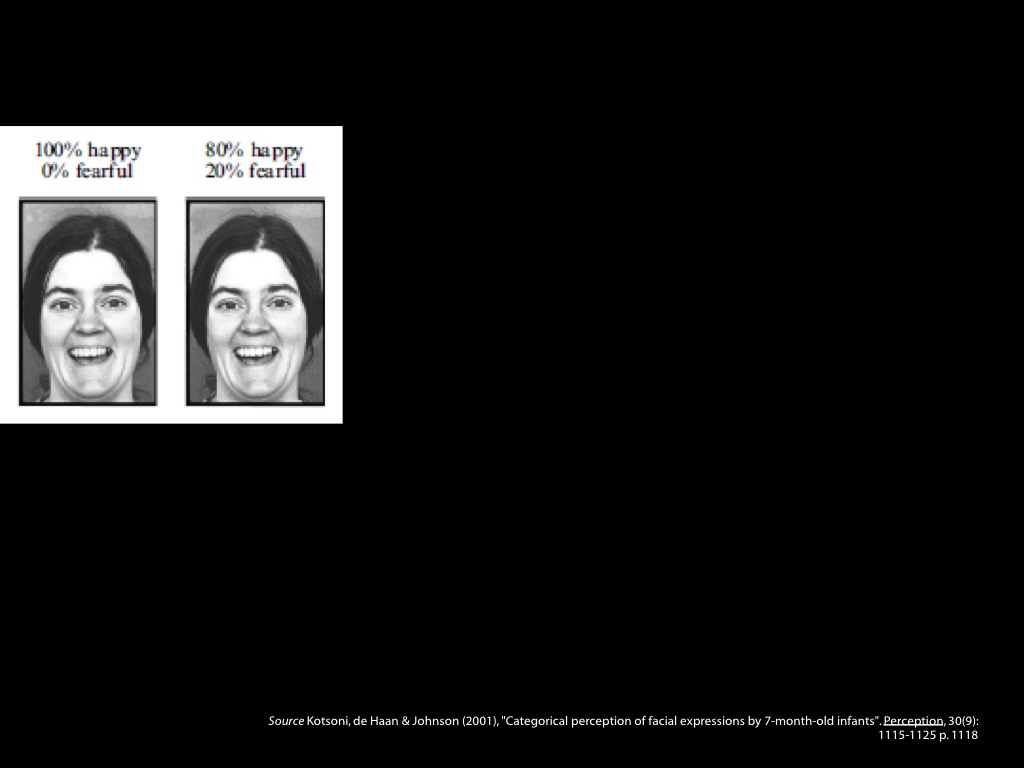
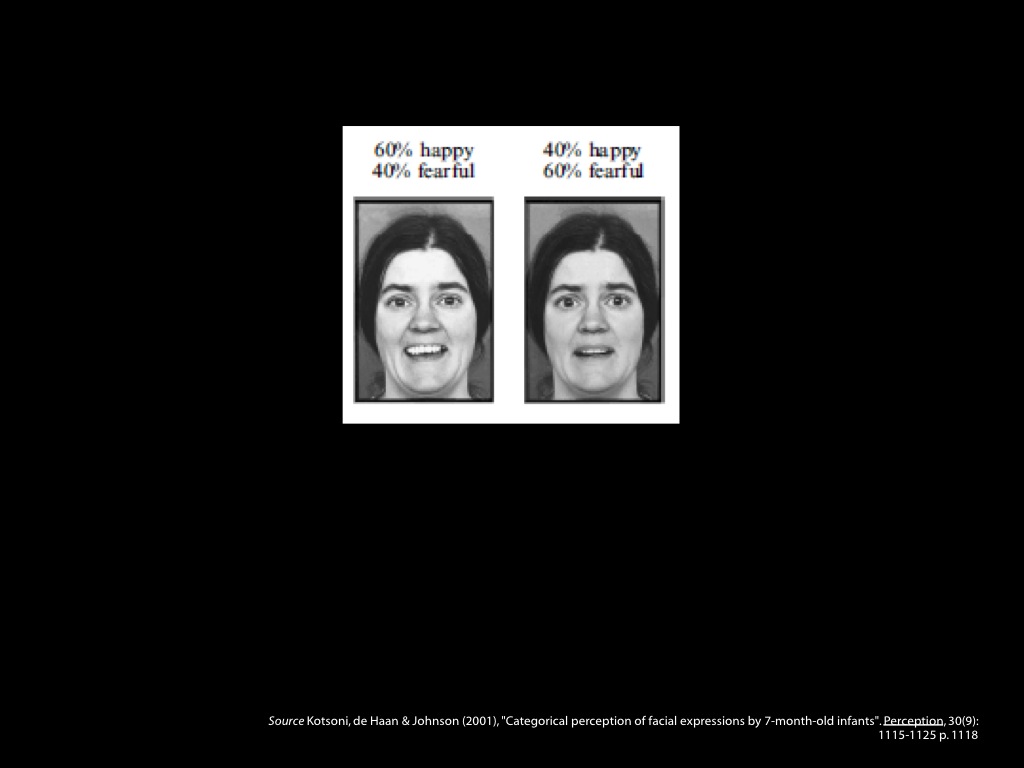
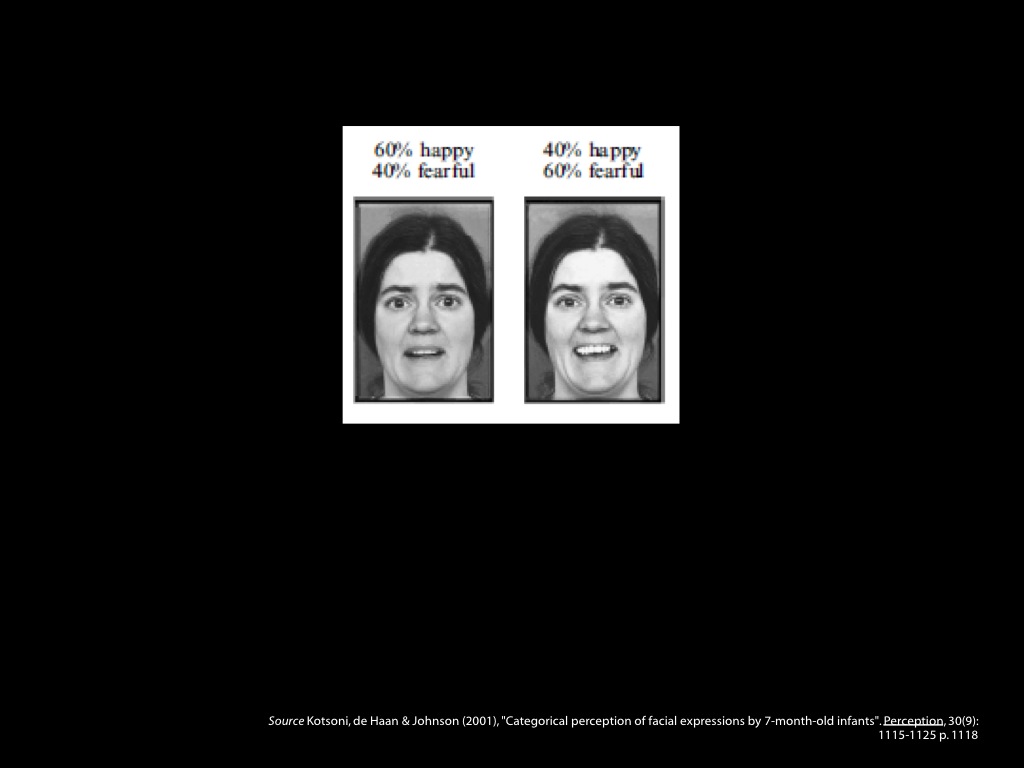
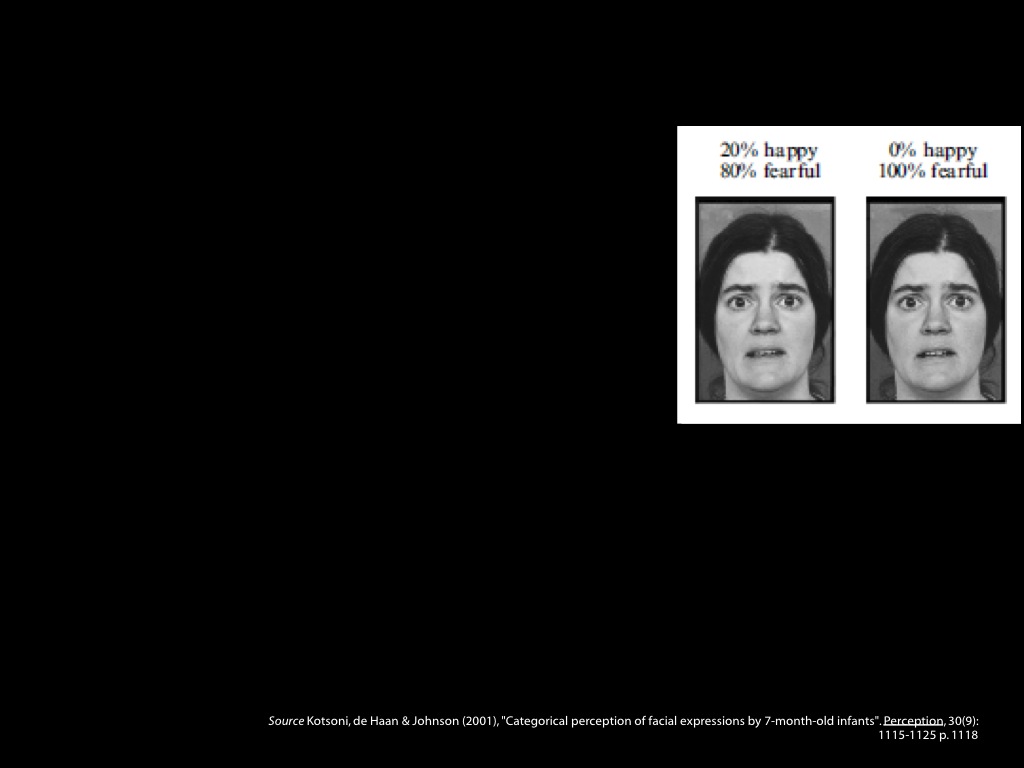
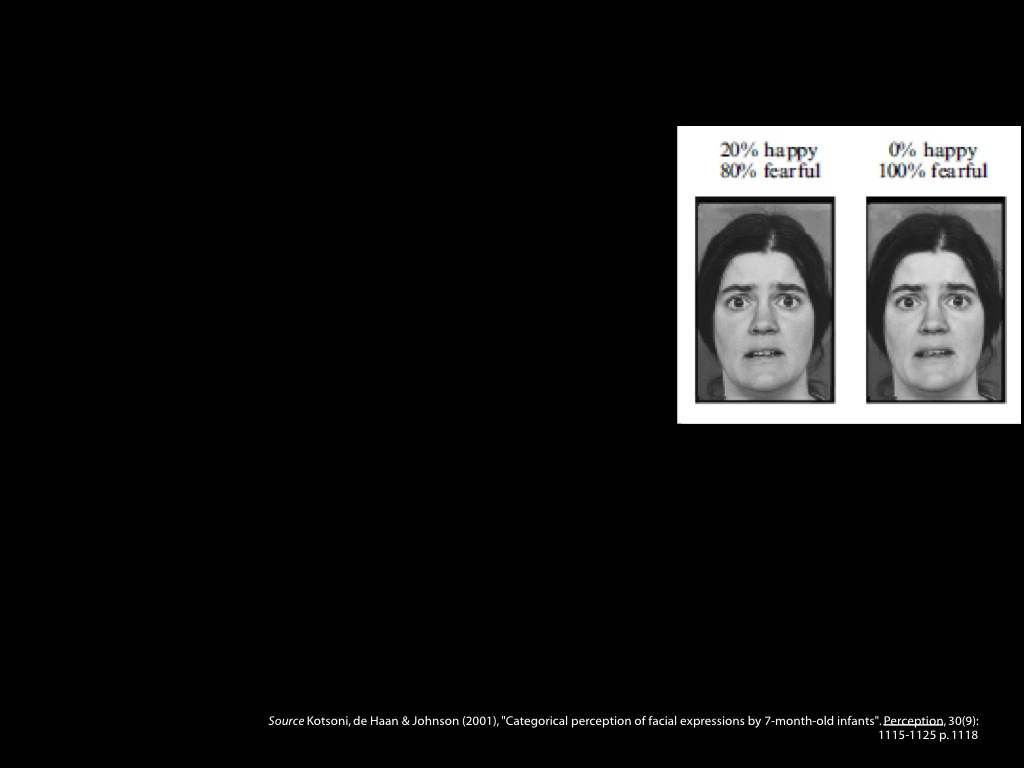
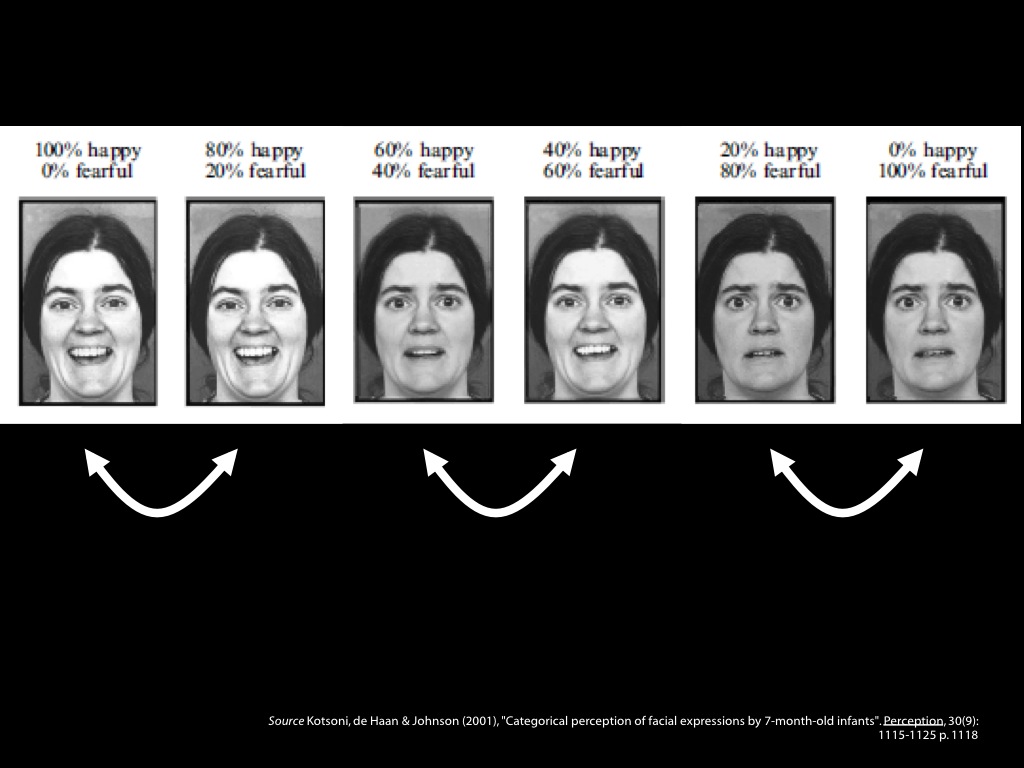

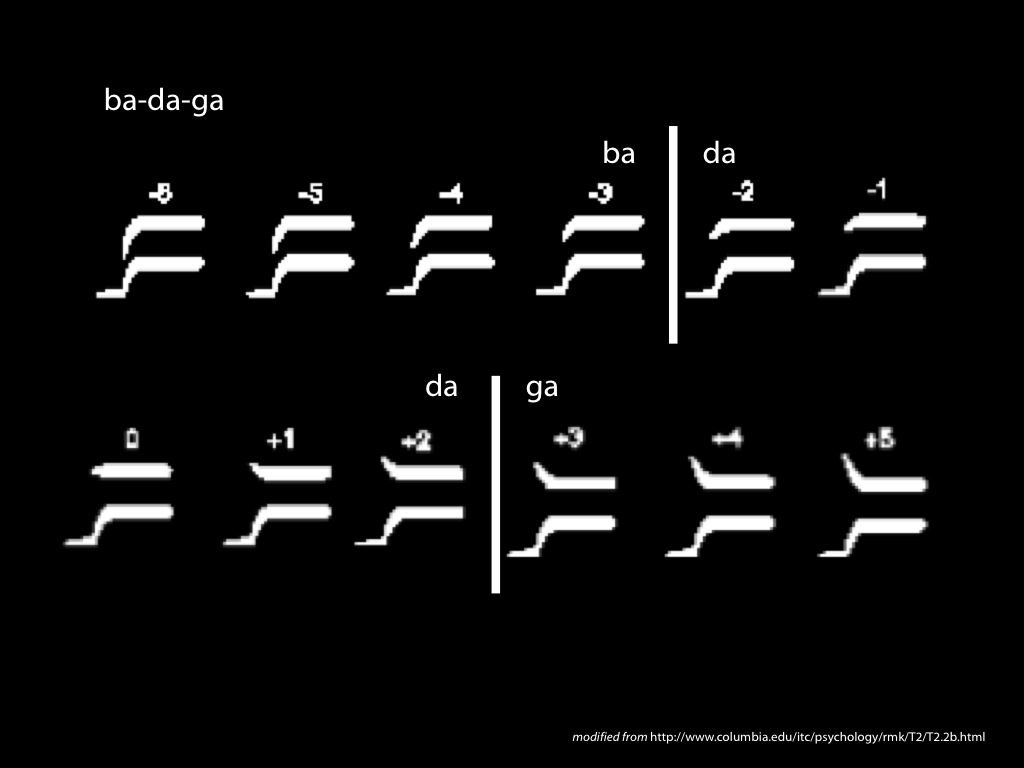
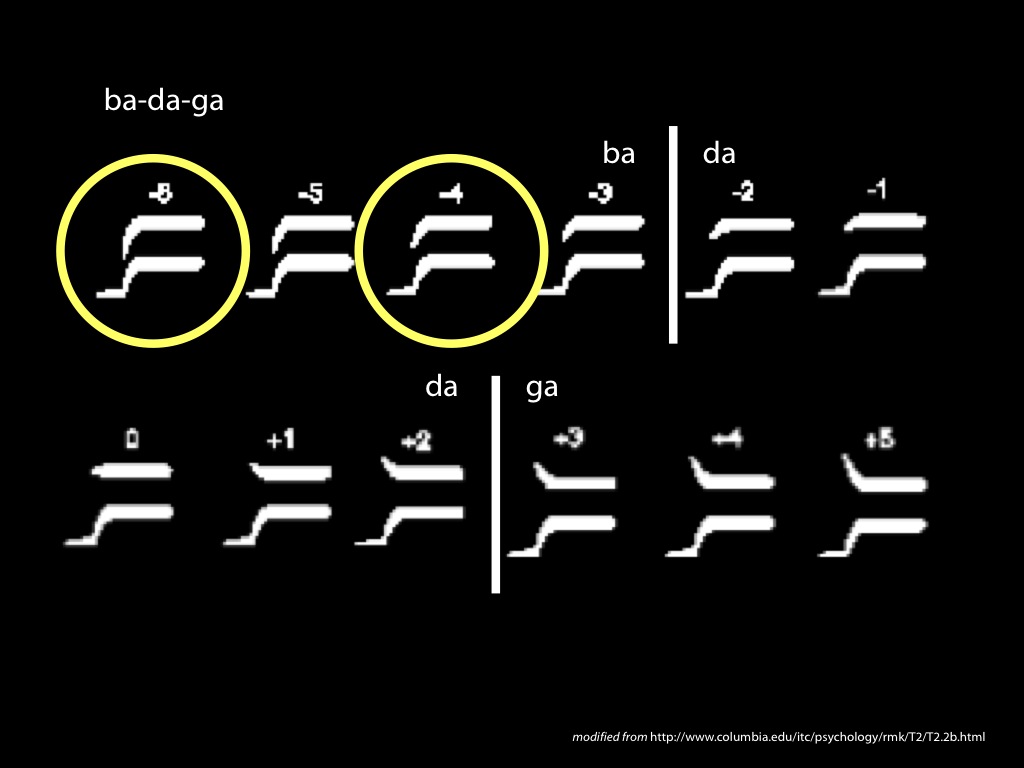
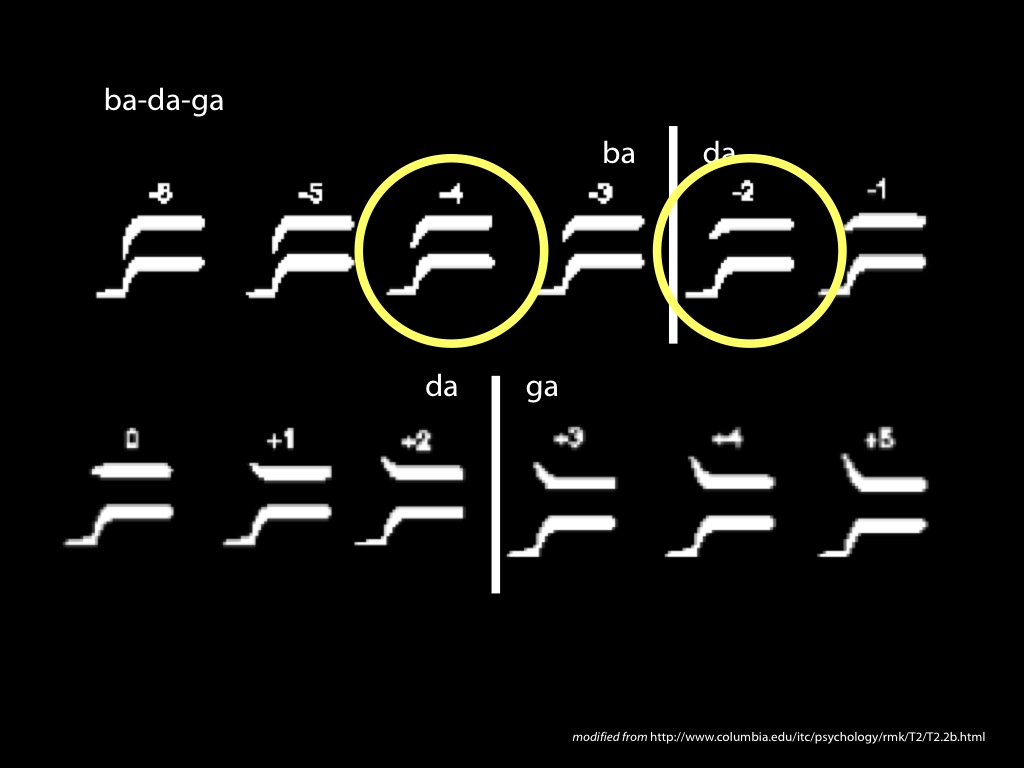
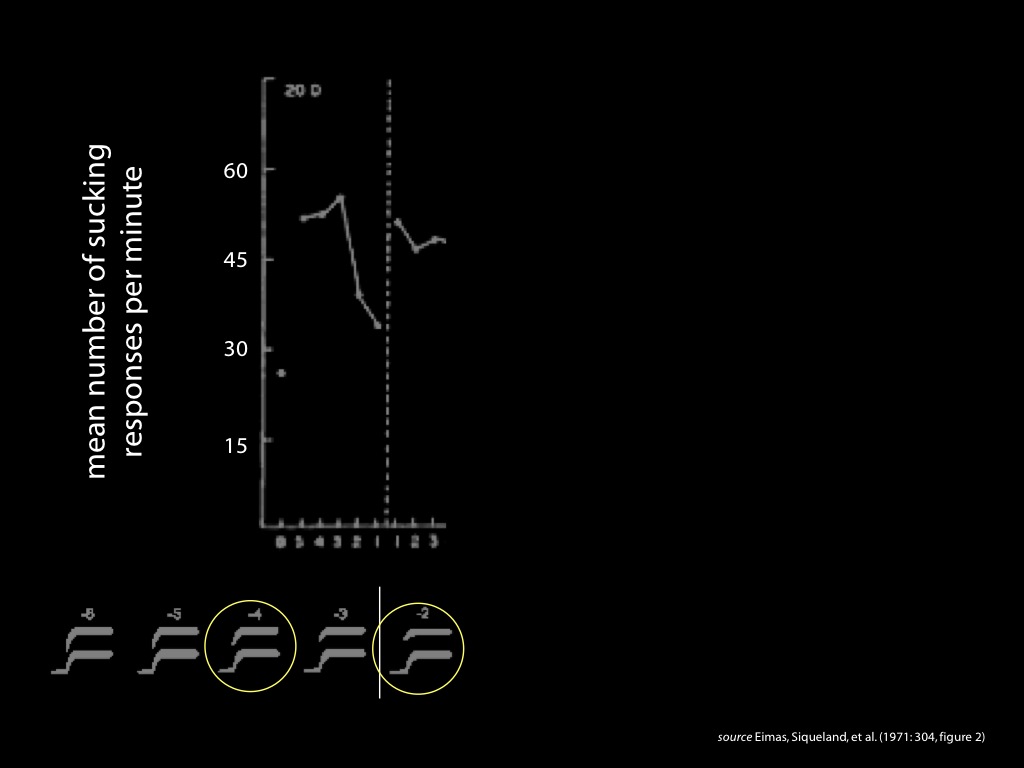
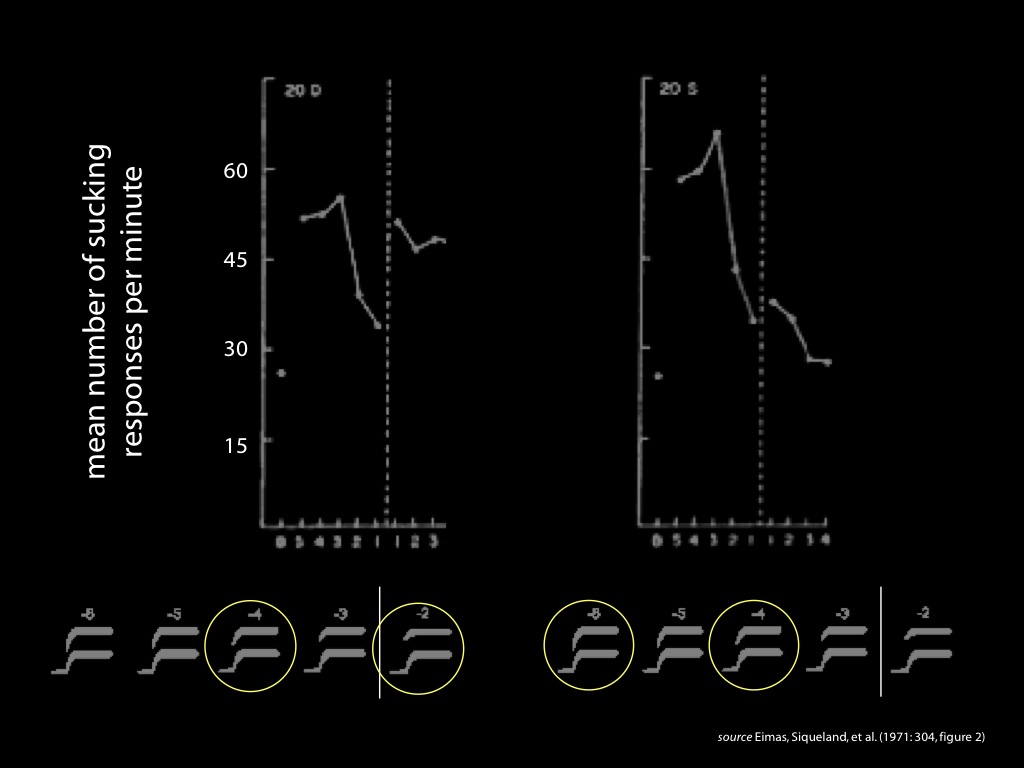
To recap, infants enjoy categorical perception not only of colour but also of orientation (Franklin et al. 2010), speech (Kuhl 1987, 2004; Jusczyk 1995) and
facial expressions of emotion (Etcoff & Magee 1992; Kotsoni et al. 2001; Campanella et al. 2002).
Infants (and adults) enjoy categorical perception of
- colour (from four months of age or earlier)
- orientation (five months)
- facial expressions of emotion (seven months)
- speech (one month)
- ...